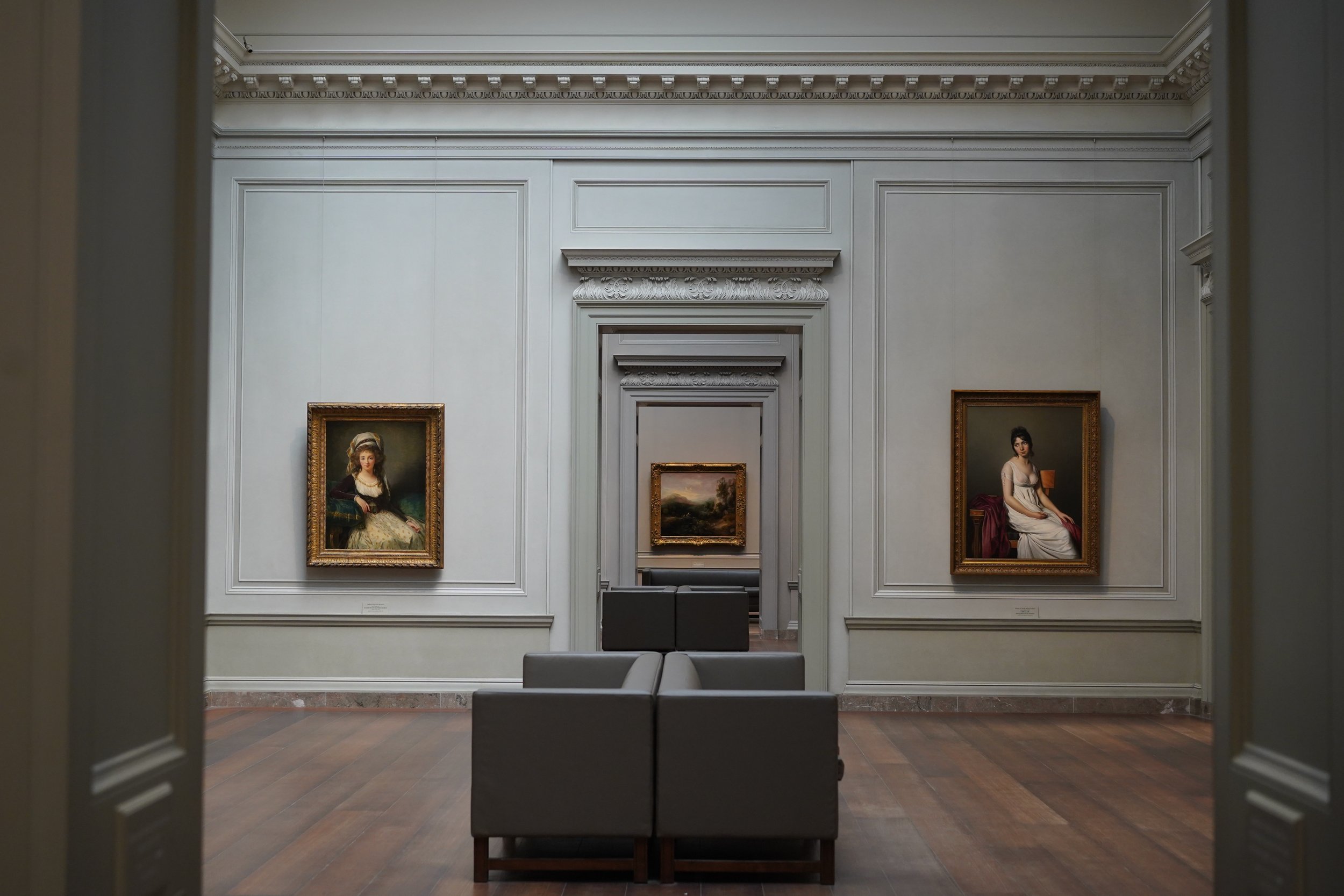Christian Aesthetics: Sunday School to Michelangelo
Article I in the Christian Aesthetics series
What constitutes Christian art? Faced with this question, we may think immediately of a sort of Sunday-school or children’s Bible image of Jesus—or we may think of biblically inspired sculpture like Michelangelo’s David, or of paintings like Rembrandt’s Storm on the Sea of Galilee. Regardless of what artworks come to mind, however, the question remains: what qualities make any piece of art definitively Christian?
To answer this, we must consider two key elements that define religious art: doctrine and aesthetics (that is, the actual religious content of the art, and the art’s quality or execution, respectively). First, the importance of doctrine is obvious—no religion, let alone religious art, could exist in the first place without a basis of fundamental teachings. Christian art, consequently, is most easily and commonly defined by the Christian doctrine it contains, which frequently takes the form of biblical subject matter, as, for example, in the children’s-Bible style of illustration already mentioned. Still, although it would perhaps be simplest to call a definition of Christian art complete at this point (i.e. based solely on obvious Christian content), this position fails to account for the making of good Christian art—with dogma alone as basis, art ultimately transforms into graceless agenda, incapable of winsomely communicating whatever truths it contains.
This introduces aesthetics, a less apparently crucial component—at least at first glance. While most would agree that beautiful art is a worthwhile pursuit, aesthetics may still seem secondary to the weighty doctrinal facts Christian art should portray. However, this is not entirely true—while doctrine and content are certainly important, equally important is the manner in which they are depicted. James 1:16-17 (ESV) says: “Every good gift and every perfect gift is from above, coming down from the Father of lights, with whom there is no variation or shadow due to change.” If all good, created things originate from God, then can it be fully God-glorifying to place good truths within mediocre or bad (i.e. not-from-God) art? Would the Psalms themselves have endured through ages of worship if stripped of their intricate poetry and reduced to factually true doctrinal statements? Similarly, Scripture repeatedly communicates that God both emanates and delights in beauty—in Psalm 50:2, He “shines forth” out of “the perfection of beauty,” and the psalmist in Psalm 27:4 longs to “behold the beauty of the Lord.” If God’s nature is to love (and indeed, to be) beauty, then is it not as un-Christian to make art that fails to reflect God’s nature (i.e. beauty), as it is to make art that fails to reflect his commandments (i.e. doctrine)?
Art, then, cannot be truly and fully Christian without both elements: it not only must actually depict Christian truth (either implicitly, or through actual religious scenes), but it also must communicate Christianity through its very technique and execution—beautiful art to honor a God who loves beauty. Christian artist, musician, and writer Andrew Peterson summarizes this balance neatly in his book Adorning the Dark: “Christ is described as being ‘full of grace and truth.’ Truth without beauty can be a weapon; beauty without truth can be spineless.” However, they “can and do coexist” (84-85). Peterson gives as an example a cathedral—saturated with doctrine and imagery in its stained glass and cruciform floorplan, yet simultaneously incredibly architecturally and artistically beautiful. Christian both in its aesthetic form and its religious essence, it–as does all truly Christian art–communicates religious wonder through both elements equally. To generalize: beauty is no cover to be thrown over truth to make it more appealing–Christian art fails to be fully true not only if it loses its religious content, but also if it lacks an aesthetically God-honoring (i.e. beautiful) form.
With this distinction in mind, then, we can return to the three “Christian” artworks mentioned at the beginning of this article: the children’s-Bible image of Jesus, Michelangelo’s David, and Rembrandt’s Storm on the Sea of Galilee. From these, we can assign examples of the possible categories within the doctrine/aesthetics system. The children’s-Bible Jesus is didactic, biblically based but often hardly artistically excellent—a good example of doctrine prioritized over aesthetics; effective for teaching, perhaps, but by no means effecting wonder. Meanwhile Michelangelo’s David is the precise opposite—aesthetically inspiring, but far more classical and Renaissance than it is biblical—a case of aesthetics prioritized over doctrine, Christian almost only by the convention of the era. Finally, Rembrandt’s Storm on the Sea of Galilee, like Peterson’s example of the cathedral, is a synthesis of the two: artistically a masterpiece that exemplifies divine order and beauty, but also an equally masterful religious depiction of a biblical narrative.
While many may commonly refer to all three of these as “Christian” art—and they are not fully wrong in doing so—they are not completely right, either. As Christianity itself is a set of beliefs that transforms not only one’s actions, but also ultimately one’s intentions, motivations, and thoughts, so too Christian art exhibits a transformed, divine character not only in its subject material, but also fully throughout its style, execution, meaning, and countless other elements. True Christian art cannot be reduced to just a depiction of some religious scene—it must glorify God through beauty and truth in all aspects of its creation.
This article is part of a series. For more articles in this series, see below.
Peterson, Andrew. Adorning the Dark. Nashville, B&H Publishing Group, 2019.



